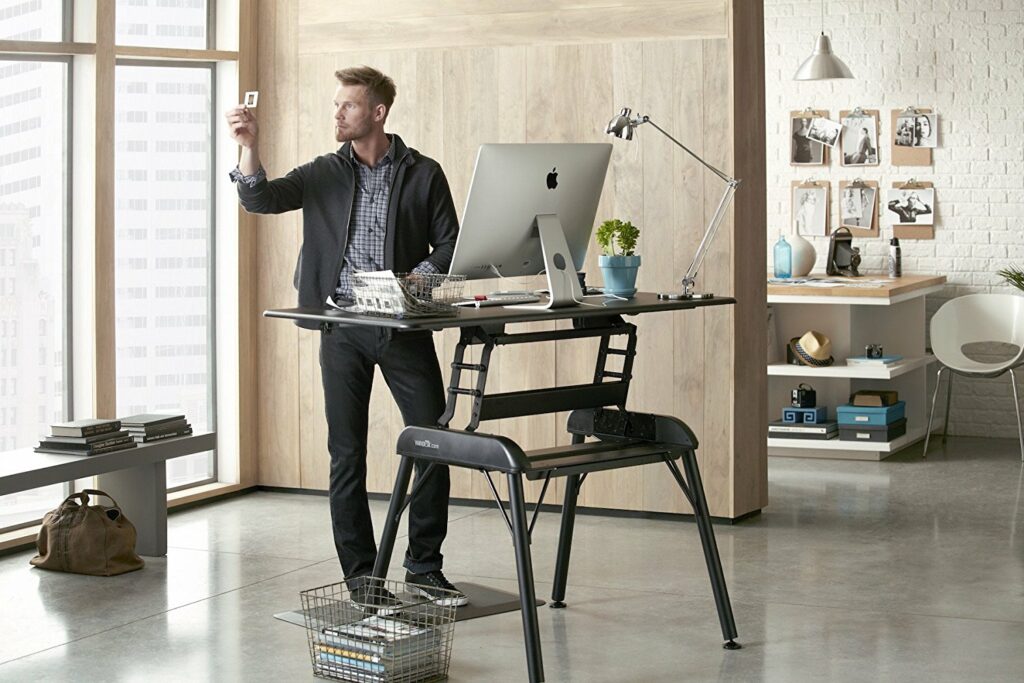Do you ever wonder how many calories you can burn just by standing at your desk? With the advent of modern technology, health and fitness have become an essential part of our lifestyle. An increasing number of individuals are switching to standing desks, replacing their traditional workstations.
But can this simple adjustment to your workspace help you burn calories? In this article, we will delve deep into the question: how many calories does a standing desk burn?
The Science Behind Calories Burned by Standing Desks
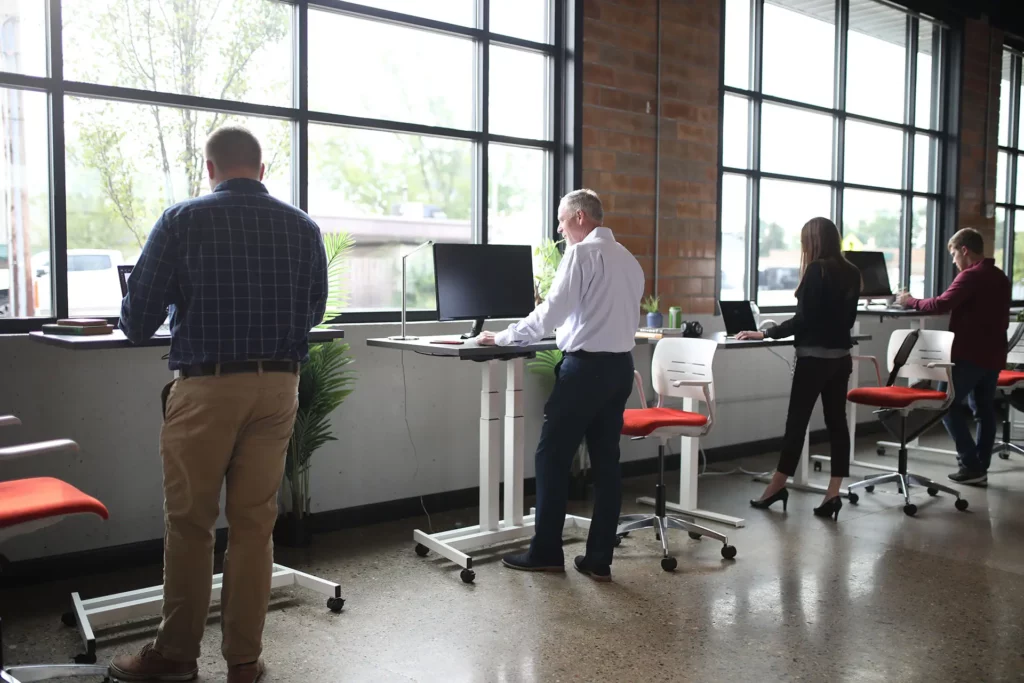
Your body is a marvel, constantly burning calories even when you’re not consciously exercising. This energy expenditure occurs through your Basal Metabolic Rate (BMR), the energy needed to maintain body functions while at rest, and Non-Exercise Activity Thermogenesis (NEAT), the energy used for movements not related to eating, sleeping, or sports-like exercise.
Standing is a part of your NEAT and thus contributes to your daily energy expenditure. According to various studies, standing burns approximately 50% more calories than sitting. Consequently, if you transition to a standing desk, you may potentially increase your daily calorie expenditure.
But is any standing desk suitable for you? Experts at ExpertEasy have reviewed the best models available in the market, and their findings will surprise you!
The Calorie Equation
In general, if you weigh 155 pounds (about 70 kg), you burn approximately 112 calories per hour while standing still. If you stand at your desk for three hours each day during a five-day workweek, you could potentially burn an extra 1,680 calories per week. Over the course of a year, this could lead to a potential weight loss of almost 6-8 kilograms, assuming all other factors remain constant.
However, various factors can affect this equation, including your age, weight, metabolism, and activity level. It is crucial to note that standing all day isn’t feasible or healthy – regular movement and variation in postures are key to a healthier lifestyle.
The Physical Benefits of Standing Desks
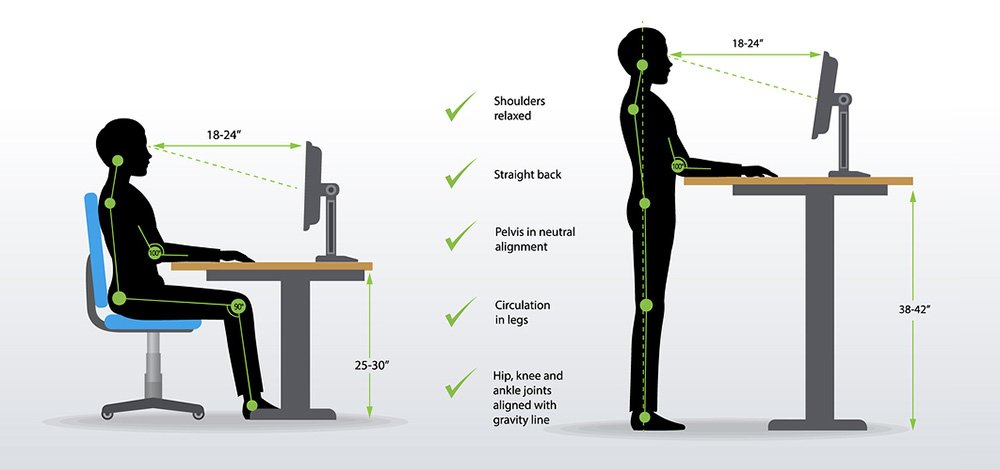
In addition to calorie burn, standing desks bring a host of other health benefits. These include:
- Improved posture and reduction in back pain
- Reduced risk of heart disease
- Lowered blood sugar levels
- Improved mood and energy levels
- Increased productivity
- Maximising Calorie Burn at a Standing Desk
Expert Tips to Effectively Utilise Your Standing Desk
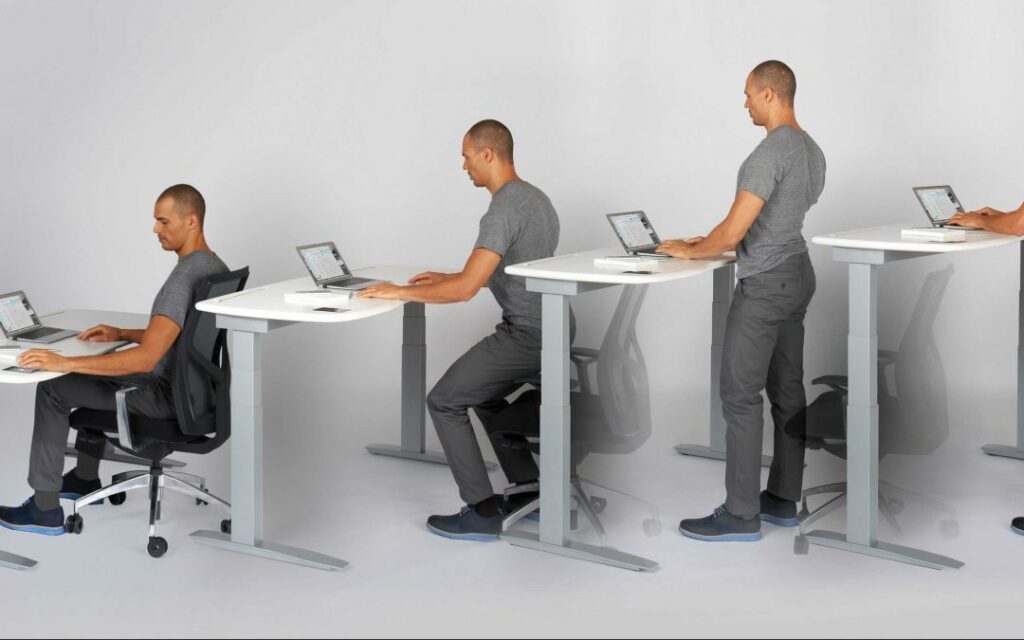
Making the switch to a standing desk is only the first step. To maximise the benefits of this ergonomic evolution, consider these expert tips:
Incorporate Movement
When standing, don’t just stand still. Incorporate light physical activities into your standing routine. For instance, you can march in place, do calf raises, or even engage in light stretching. These activities don’t just enhance your calorie burn; they also play a crucial role in reducing the risk of musculoskeletal discomfort. Further, they help keep your body engaged, ward off stiffness, and promote better blood circulation.
Read More: Vitamin B Supplements: Boost Your Health and Energy Naturally
Use a Balance Board or Stability Disc
These fitness tools, often underrated, can be of tremendous help in optimising your standing desk experience. When you use a balance board or stability disc, you engage your core muscles, which not only aids in burning more calories but also improves balance and posture. This practice can lend a small workout element to your daily routine without taking away from your productivity.
Take Regular Breaks
Standing all day is as counterproductive as sitting for extended periods. It’s crucial to take regular short breaks to stretch or walk around. This practice not only keeps your body moving but also helps refresh your mind. Regular breaks can mitigate fatigue and discomfort, making your standing desk experience more enjoyable and sustainable.
Switch Between Standing and Sitting
As with most things in life, balance is key when it comes to optimising your standing desk usage. Extended periods of standing can be as detrimental to your health as prolonged sitting. Hence, it’s advisable to alternate between the two postures. This approach, known as sit-stand rotation, ensures you reap the health benefits of both standing and sitting while minimising potential discomfort.
Maintain Correct Posture
Even with a standing desk, maintaining correct posture is crucial to avoid back pain and other musculoskeletal issues. Ensure your monitor is at eye level, and keep your wrists straight and your arms close to your body while typing. Also, keep your feet flat on the floor and your knees slightly bent.
Use an Anti-fatigue Mat
Standing for long periods can be hard on your feet. Using an anti-fatigue mat can help reduce discomfort by providing cushioning and encouraging subtle movement of your leg muscles.
Personalise Your Workspace
Make your workspace enjoyable to be in. This could include using a desk with a pleasant view, decorating your desk with plants or photos, or playing your favorite background music. A positive workspace can increase job satisfaction and productivity.
Standing Desks: A Game-Changer for Remote Work
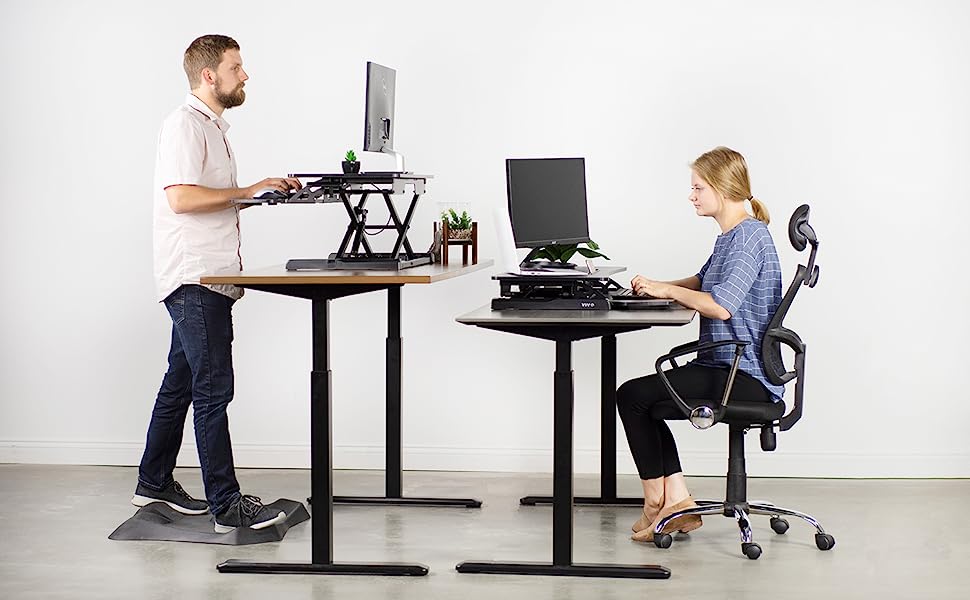
As the world shifts towards flexible work arrangements, including work-from-home setups, standing desks have become increasingly important. This section explores the benefits of standing desks specifically for remote workers, freelancers, and international business owners.
Home Office Ergonomics
Maintaining an ergonomic workspace is crucial, even when working from home. Standing desks offer a versatile solution, promoting a healthy posture and helping to prevent musculoskeletal issues often associated with long hours of sitting.
Maintaining Work-Life Balance
With work-from-home setups, maintaining a clear distinction between personal and professional life can be challenging. The ability to switch between sitting and standing can help create a ‘work mode’ mentality, aiding in keeping these aspects separate.
Health and Productivity Management
Without the enforced breaks of a conventional office setting, remote workers may find themselves sitting for unhealthy lengths of time. A standing desk serves as a reminder to incorporate regular movement into the workday, promoting both physical health and productivity.
Customising Personal Workspaces
For freelancers and international business owners, work often happens in a variety of settings. Standing desks, especially portable ones, allow them to customise their workspace to suit their needs, whether at home, in a co-working space, or on the go.
Incorporating Wellness into Business Practices
For international business owners, endorsing the use of standing desks can demonstrate a commitment to employee wellness. This may not only improve employee health and productivity but can also enhance company culture and brand reputation.
Standing Desk: An Essential Tool for a Healthy Lifestyle
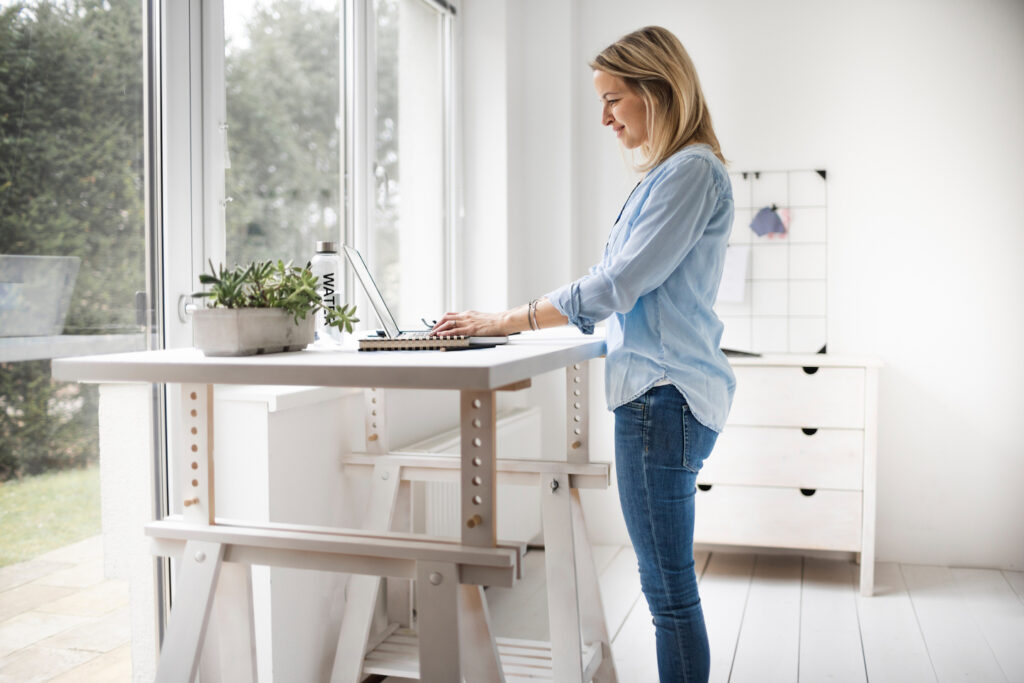
Standing desks, while not a magic bullet for weight loss, represent a crucial stride towards fostering a healthier lifestyle. They reflect our growing understanding of how workspace ergonomics can influence our health. By encouraging less sedentary behavior and promoting movement, standing desks can contribute to an increase in calorie burn, improved posture, and potentially enhanced mood and energy levels.
However, the real effectiveness of a standing desk comes from integrating it into a comprehensive approach to well-being. This includes maintaining a balanced diet, engaging in regular exercise, and utilising the desk in a way that prioritises posture and movement. In essence, standing desks are more than just a tool for health; they symbolise a commitment to holistic wellness, encapsulating not just physical health but mental well-being and productivity as well.
Frequently Asked Questions
How many calories can I burn with a standing desk?
The number of calories burned will depend on several factors, including your weight, age, metabolism, and activity level. On average, a person weighing 70 kg may burn approximately 112 calories per hour while standing still.
Is standing for long periods healthy?
Long periods of standing, like prolonged sitting, can lead to discomfort and fatigue. It’s key to balance between sitting and standing, include regular movement, and take short breaks for stretching or walking around.
Can a standing desk help with weight loss?
While a standing desk won’t directly cause significant weight loss, it can contribute to a calorie deficit when combined with a balanced diet and regular exercise. So, it can indeed be a beneficial tool in your weight loss journey.
Do I have to stand all day at a standing desk?
No, standing all day can be as harmful as sitting all day. It’s important to alternate between sitting and standing throughout your workday. This practice is known as sit-stand rotation. Also, try to include movement and take regular breaks.
Can a standing desk improve my productivity?
Studies suggest that standing desks can boost mood and energy levels, leading to increased focus and potentially improving productivity. However, individual experiences may vary, so find a routine that best fits your work style.

